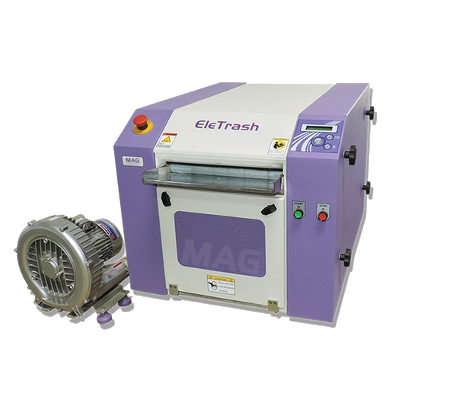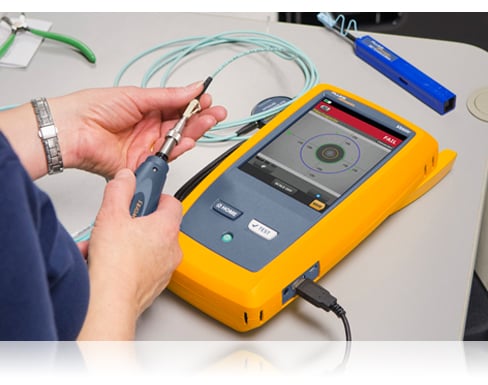All You Need to Understand About Robotic Vision and Its Applications in Advanced Optical Measurement Systems
Robotic vision stands for a considerable innovation in the crossway of computer vision, artificial intelligence, and equipment understanding. This modern technology enhances the precision of optical measurement systems, enabling real-time data evaluation and improved top quality control. Its effect extends several fields, from manufacturing to medical care. However, the progressing landscape of robotic vision elevates concerns about future capabilities and applications (robotic vision). What developments lie ahead in this transformative field?
Recognizing Robotic Vision: Secret Concepts and Technologies
Robotic vision includes the innovations and approaches that allow equipments to analyze and understand aesthetic information from their atmosphere. This area incorporates aspects of computer system vision, artificial intelligence, and equipment knowing to facilitate automatic decision-making based on aesthetic data. Secret principles include image handling, which involves the improvement and analysis of photos to draw out purposeful features, and things acknowledgment, which allows devices to recognize and classify things within a scene.

The Assimilation of Robotic Vision With Optical Dimension Solutions
As industries significantly require precision and performance, the integration of robot vision with optical dimension systems has arised as a transformative technique. This synergy allows robotics to regard and translate their surroundings, improving the capability of optical dimension systems to assess and evaluate objects with unparalleled accuracy. By furnishing optical sensors with innovative imaging modern technologies, robotic vision enables real-time information collection and handling, facilitating instant adjustments to measurement parameters.
Additionally, the combination empowers automated systems to spot variations in dimensions, surface area top quality, and placement, which are vital in quality assurance processes. Boosted algorithms, such as machine learning, more boost this combination by boosting the systems' capability to adapt to different settings and scenarios. As a result, the assimilation not only enhances measurement processes however likewise decreases errors, making certain that products fulfill strict market criteria, thus solidifying the role of robotic vision in the future of optical dimension systems.
Applications of Robotic Vision in Manufacturing
In modern-day production atmospheres, making use of vision systems has actually revolutionized production processes by allowing equipments to perform tasks with amazing precision and speed. Robotic vision systems are progressively used for quality assurance, where they evaluate items for defects and guarantee adherence to requirements. These systems utilize cams and progressed formulas to assess products in real-time, substantially reducing the threat of human error.
Additionally, robotic vision facilitates automation in assembly lines, permitting robots to properly determine components and assemble them with very little downtime. This technology also enhances inventory management, as vision systems can keep track of supply degrees and detect discrepancies, assuring a seamless supply chain.
Robotic vision aids in the application of smart factories, where information from vision systems can be incorporated with other technologies to enhance operations (optical measurement system). On the whole, the applications of robotic vision in manufacturing demonstrate its crucial function in boosting performance, high quality, and performance throughout various fields
Robotic Vision in Healthcare: Changing Person Care

In rehabilitation, robotic vision aids in keeping track of person progress and customizing therapy sessions to specific demands. It supports physician by automating jobs such as information collection and individual monitoring, allowing for more time to concentrate on direct patient interaction. Additionally, robot vision boosts telemedicine by allowing remote medical diagnosis and virtual assessments, useful site bridging the void between patients and healthcare suppliers. Generally, the application of robotic vision in healthcare is revolutionizing client treatment, bring about boosted results, performance, and individual satisfaction.
Future Fads and Growths in Robotic Vision Technology
The rapid development of robotic vision technology guarantees to better enhance its applications throughout numerous sectors, including health care. Future trends suggest a significant change towards including expert system and artificial intelligence, making it possible for systems to discover from huge datasets and enhance precision in time. Boosted sensing unit technologies and deep knowing algorithms are expected to improve object acknowledgment capabilities, allowing robots to translate complex atmospheres more efficiently.

The assimilation of increased truth (AR) with robot vision will likely change how robots help in medical procedures and diagnostics. This harmony will certainly promote real-time information visualization, improving decision-making processes. In addition, miniaturization of elements will bring about even more small and versatile robot vision systems appropriate for a variety of jobs. As these innovations unfold, industries will certainly witness boosted automation and effectiveness, solidifying robotic vision as a cornerstone of innovative technical services.
Regularly Asked Questions
What Are the Key Components of a Robotic Vision System?
The main parts of a robotic vision system consist of cams for photo capture, cpus for information analysis, formulas for interpretation, and actuators for movement. Together, these aspects allow robotics to perceive and interact with their environment efficiently.
How Does Robotic Vision Improve Accuracy in Measurements?
Robotic vision enhances dimension precision by utilizing innovative imaging innovations, enabling exact item discovery and spatial analysis. This capability decreases human mistake, enhances repeatability, and permits real-time adjustments, inevitably enhancing general dimension integrity and efficiency.
What Industries Benefit A Lot Of From Robotic Vision Technology?
Different markets benefit substantially from robotic vision technology, including manufacturing, medical care, farming, and logistics. These sectors make use of enhanced precision, efficiency, and automation, resulting in enhanced efficiency and decreased functional prices in their particular processes.
Can Robotic Vision Equipments Job in Low-Light Issues?
Robotic click here to find out more vision systems can undoubtedly work in low-light conditions, making use of sophisticated sensing units and formulas to boost image quality. This ability enables them great site to do properly in various atmospheres, consisting of industrial and monitoring applications, also with minimal lighting.
What Are the Prices Connected With Applying Robotic Vision?
The costs connected with applying robotic vision differ substantially, affected by elements such as video cameras, software program, and integration. Additional expenditures consist of maintenance, training personnel, and prospective upgrades to existing systems, which can build up over time.